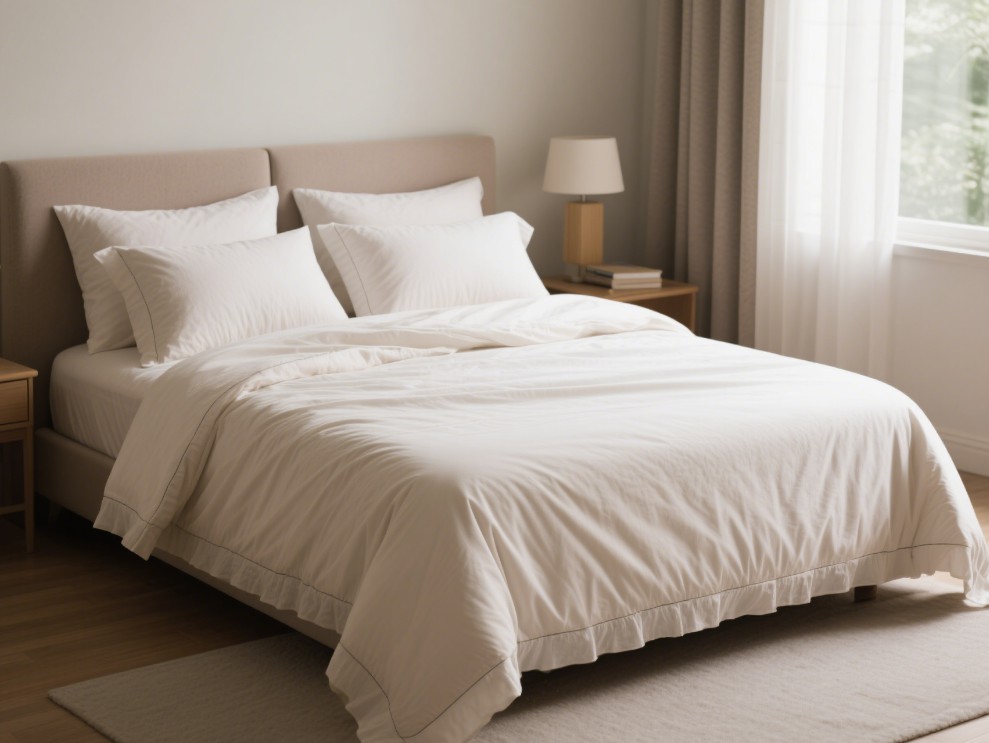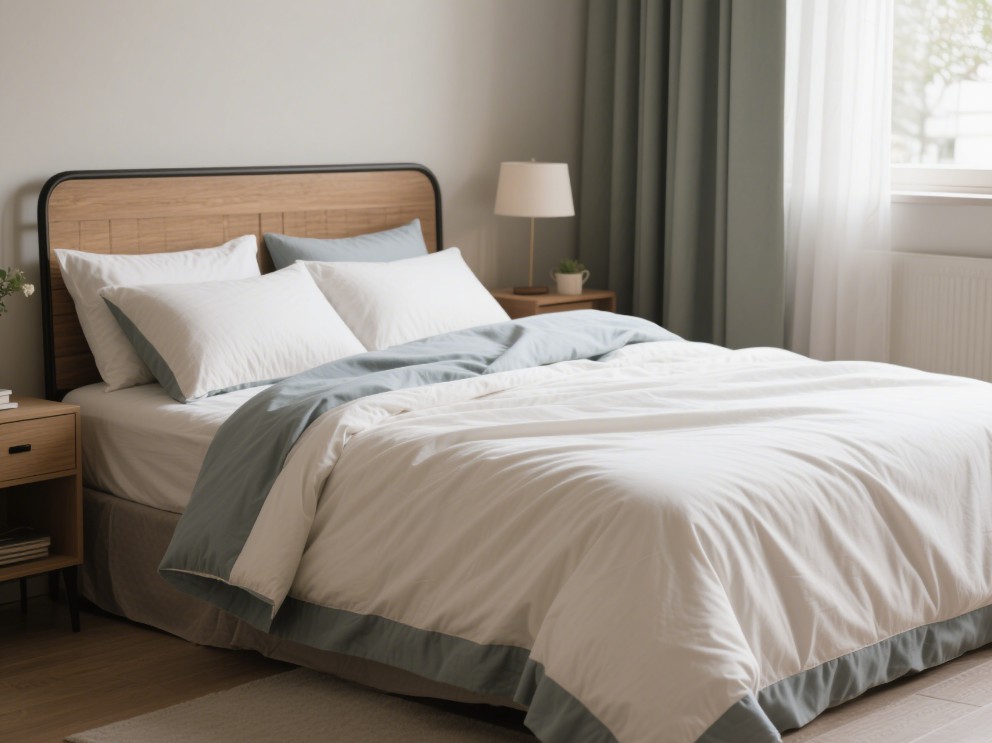It was a quiet afternoon when Mia decided she needed a change. Her dreams had been restless lately, and she believed — perhaps romantically — that the key to better sleep was hidden in the very fabric that cradled her each night. So, she set off on a little quest, guided by whispers of comfort and tales of texture, determined to find the perfect bedding.
Her first encounter was with pure cotton. It was a sunny, familiar place, like coming home after a long trip. The cotton sheets she tested were soft, breathable, and welcoming. They felt cool against her skin, adapting easily to the changing seasons. Cotton, she learned, was easygoing — durable, machine-washable, and forgiving of life’s little messes. But there was a hidden truth: over time, with countless washes, cotton could lose its initial luster. Some types wrinkled easily too, a fact Mia noted with a sigh, imagining her future weekends spent ironing.
Next, Mia wandered into a shimmering grove, where the leaves seemed to be woven from silk and moonlight. Here, she discovered Tencel. The sheets felt luxuriously smooth, almost slippery, and incredibly cool to the touch. Sleeping in Tencel, she imagined, would be like sleeping wrapped in a soft, dewy mist. Its breathability was unmatched, making it ideal for warm nights and sweaty sleepers. Even better, it resisted wrinkles naturally and draped elegantly over her bed. Yet, Mia sensed a certain fragility — Tencel demanded gentler care, preferring cooler washes and tender hands. It was a fabric for those who treated bedtime as an art form, not a routine.

Further along, Mia stumbled into a rustic, sun-dappled field. Linen greeted her here, rougher under her fingertips but rich with character. The linen sheets felt heavier, textured, alive. They carried a cooling effect too, one that grew softer and more comforting with time, like a well-worn book. Mia adored linen’s honesty — its wrinkles were not flaws, but badges of authenticity. Still, she knew it wasn’t for everyone. Linen could be temperamental at first, stiff and crinkly, requiring patience that not all sleepers would willingly offer.
Just when Mia thought her journey was ending, she found herself on a misty hillside where the earth smelled of rain and wool. There, she encountered wool bedding — not the scratchy kind she had feared, but soft, cloud-like layers that promised warmth without stifling heat. Wool was a master of temperature regulation, keeping her cozy on freezing nights and surprisingly cool during chilly dawns. It naturally repelled dust mites and odors, needing less frequent washes than other materials. But with its many gifts came responsibility: wool needed special detergents and a gentle touch, and it came with a heavier weight — something Mia knew might feel comforting to some, and overwhelming to others.
Returning home, Mia lay on her old sheets, thoughtful. Each fabric was a different world, offering its own comforts and asking for different kinds of care. Cotton was friendly and practical; Tencel, smooth and sustainable; linen, wild and enduring; wool, nurturing and protective. There was no true winner — only choices, depending on what one craved in the secret hours between dusk and dawn.
In the end, Mia chose to mix them, layering her bed with the stories of each fabric: a cotton sheet for its familiar embrace, a Tencel duvet for summer’s heat, a linen throw for relaxed Sunday mornings, and a wool blanket tucked away for the depth of winter. Every night, as she drifted into dreams, she felt as though she were traveling through different seasons, wrapped in the care and magic of the earth itself.
